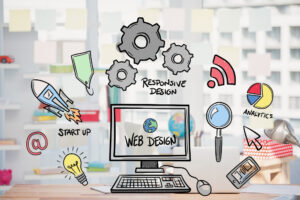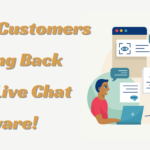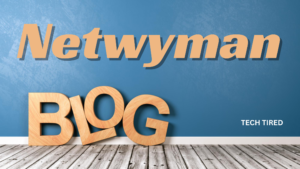The Modern Contact Center Stack: What Does It Look Like in 2024?
- 1 The Essential Elements of the Modern Contact Center
- 1.1 A Cloud-Based Foundation: Agility and Scalability Are Paramount
- 1.2 Workplace Productivity Tools: Must-Have Features
- 1.3 Proper Omnichannel Communication: The Gold Standard
- 1.4 Empowering Agents: The Key to Superior Service
- 1.5 Analytics and Reporting: The Pulse of Continuous Improvement
- 1.6 Artificial Intelligence: A Game-Changer for the Contact Center
- 1.7 The Evolution of the Contact Center Stack
In its nascent stages, contact centers, or call centers as they were once known, primarily managed voice calls and traditional mail correspondence. However, businesses swiftly uncovered more dynamic and effective means to engage their clientele as the digital landscape morphed. This evolution has given rise to the modern Contact Center as a Service (CCaaS), an agile and scalable approach to customer communication, redefining how companies deliver exceptional service.
The emergence of new communication mediums, from real-time chat to video conferencing, allows organizations to mitigate call queues and slash wait times while delivering a more personalized and streamlined experience. Yet, this evolution has dramatically reshaped the architecture of modern contact centers.
Companies now require a broader and more intricate array of technologies to provide experiences that foster customer loyalty, increase revenue, and enhance employee efficiency. Below is an in-depth exploration of the contemporary contact center stack in 2024.
The Essential Elements of the Modern Contact Center

Cutting-edge contact center technology has become indispensable to success in virtually any industry. Businesses must leverage a flexible, agile, and inventive suite of tools to remain competitive through exceptional customer experience. Here’s what a modern contact center demands:
A Cloud-Based Foundation: Agility and Scalability Are Paramount
In today’s rapidly shifting environment, legacy and on-premises contact center solutions are becoming obsolete. As the nature of workplaces transforms—with hybrid and remote models becoming the norm—customers have embraced new channels, and emerging technologies like artificial intelligence and automation demand unprecedented levels of scalability and adaptability.
Cloud infrastructure allows organizations to adjust their contact center capabilities based on evolving demands without incurring unnecessary expenses. The cloud enables businesses to set up remote workstations, handle abrupt surges in demand, and effortlessly incorporate new features.
Michael McCloskey, CEO of Bright Pattern, remarked, “A robust modern architecture must also ensure steadfast reliability. Contact centers require unwavering availability, and an active-active cloud deployment guarantees that the system is perpetually operational.”
Moreover, cloud solutions present fewer upfront and maintenance costs than their on-premises counterparts, making them particularly critical in today’s challenging economic landscape. These factors have driven the CCaaS (Cloud Contact Center as a Service) market to a remarkable compound annual growth rate of 19.1%.
Workplace Productivity Tools: Must-Have Features
While modern contact centers boast a variety of innovative tools, from hunt groups to AI-enhanced assistants, certain features are fundamental to all businesses, including:
- Automatic Call Distribution (ACD): With rising interaction volumes, ACD technologies are pivotal for managing communication flows efficiently. These solutions allocate calls and messages to the most appropriate agents based on skill set, intent, and priority.
- Predictive Dialers: For outbound teams, efficiency is key. Predictive dialers automate outbound dialing, significantly improving contact rates and streamlining resource use.
- CRM Integrations: Modern consumers demand personalized experiences across all platforms. Integrations between contact center software and CRM solutions provide a unified view of the customer, allowing agents to deliver more context-driven interactions. Platforms like Bright Pattern’s contact center facilitate seamless integration with CRM systems such as Salesforce and Microsoft Dynamics, further enhancing agent productivity.
Proper Omnichannel Communication: The Gold Standard
Today’s customers expect the freedom to communicate on the channel of their choice without sacrificing convenience. Yet, according to Bright Pattern, only 6% of businesses have fully integrated omnichannel environments, though 57% employ multiple channels.
A truly omnichannel contact center goes beyond simply offering various communication methods. It requires an interconnected ecosystem where data flows seamlessly across touchpoints. This approach preserves the context of every customer interaction, ensuring a more cohesive and integrated experience.
Mike Galagher, Head of Marketing at Bright Pattern, emphasizes, “Bright Pattern’s unified architecture, built natively, delivers a seamless experience for both customers and agents, enhancing the customer journey across all channels.”
Empowering Agents: The Key to Superior Service
Outstanding customer experiences stem from empowered employees. When agents feel supported, they can provide superior service. Comprehensive contact center solutions offer several built-in tools for empowering agents, including:
- Computer Telephony Integration (CTI): CTI links phone systems with computers, giving agents instant access to relevant information during calls, ensuring they’re always well-prepared.
- Knowledge Management Systems: These systems offer agents easy access to critical data such as CRM insights, product information, and troubleshooting guides, helping them resolve customer issues efficiently.
- Workforce Management Tools: These solutions enable businesses to optimize agent scheduling and ensure adequate coverage to meet customer demand. They also improve workplace engagement by offering flexibility and control.
Modern platforms like Bright Pattern allow agents to work from any location, granting them unprecedented mobility and flexibility in the workplace.
Analytics and Reporting: The Pulse of Continuous Improvement
To consistently enhance performance, contact centers must have access to real-time data and actionable insights. Cutting-edge contact center platforms allow businesses to monitor key performance indicators (KPIs), from call volumes to agent efficiency metrics like average handle time and customer satisfaction.
AI-driven analytics solutions can uncover patterns, identifying areas ripe for improvement. Through intuitive dashboards, companies can access all relevant data at a glance, empowering more intelligent decision-making.
Artificial Intelligence: A Game-Changer for the Contact Center
Artificial intelligence (AI) has become a transformative force within the modern contact center. AI-powered chatbots and virtual agents can autonomously handle basic inquiries around the clock, allowing human agents to focus on more complex problems. Advanced sentiment analysis tools can detect customer frustration, facilitating smoother hand-offs to the right agent.
AI also provides agents with real-time recommendations, offering next-best-action guidance based on historical and live data, which enhances both the customer and employee experience.
The Evolution of the Contact Center Stack
The composition of a successful contact center stack in 2024 is a far cry from the rudimentary systems of the past. To maintain a competitive edge and optimize efficiency, today’s contact centers must incorporate omnichannel communication, AI-driven tools, and automation. These elements collectively ensure a more seamless, productive, and customer-centric operation.

















